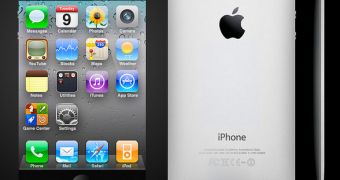Apple has defied expectations that it would introduce the iPhone 5, and instead launched the iPhone 4S, not because it simply didn’t want to, but because it wouldn’t have been practical to do so this early, according to IHS analysts.
The market intelligence firm issued a ‘Quick Analysis of iPhone 4S Announcement’ to talk about Apple’s reasons behind the incremental update of the existing iPhone 4, saying it confirms their own outlook that an LTE iPhone is still far away.
The next-generation 4G technology, also referred to as Long Term Evolution (LTE), will be present in the next iPhone, but Apple doesn’t plan to ship the upcoming model for another year, or perhaps even two, warns IHS.
“IHS continues to expect that Apple will introduce an LTE-capable iPhone 5 when an affordable chipset solution allowing a thinner form factor is available. The iPhone 5 most likely will arrive in late 2012, or in mid-2013,” reads an IHS report signed Francis Sideco.
In fact, “Given the success of the iPhone 4, Apple’s incremental approach to upgrading the line makes sense,” IHS believes.
The firm believes that current iPhone hardware does very fast 3G, resulting in “no appreciable benefit to adopting LTE.” Other reasons cited by IHS include the current spectrum strain and uplink speed troubles.
“As Apple always does, the company selected features for the iPhone 4 that are designed to deliver a superior customer experience, rather than to provide technology for technology’s sake,” said Francis Sideco, senior principal analyst, wireless communications, for IHS.
“Because of this, Apple declined to offer an LTE-enabled iPhone that would have been more expensive, larger and more power hungry—and instead opted to introduce a device that delivers nearly the same wireless data speed, but with a superior user experience,” Sideco remarked.
Sideco added: “The use of the A5 should increase the performance significantly, and will put Apple right at the leading edge of the dual-core trend in smartphones. In addition to dual processors, the A5 integrates dual-core graphics. This is critical in achieving faster performance while minimizing power consumption—essential to maintaining long battery life.”
The firm also believes Apple’s Siri personal assistant technology will make a foray in the automotive industry via infotainment applications.

 14 DAY TRIAL //
14 DAY TRIAL //